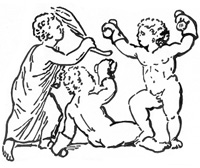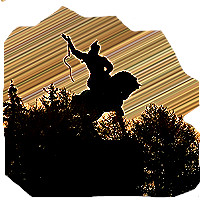Old time fighters were typically put to work chopping wood as part of their fight preparation. Understanding this, and getting long in the tooth and wide in the belly, I decided, two months ago, to take every opportunity to use tools in my training. I already use sticks and bats on the bag, but these do not challenge the grip as much as heavier tools with thicker handles striking harder surfaces and being used at angles determined by nature not by man’s design. The primary benefits of tool use, especially chopping wood, which was my favorite recreational work as a teen, is that the wide gripping and the impact causes increased hand strength and bone density, working the hands without hurting them, like punching does. Every boxer should use heavy sticks, bats, axes and a mattock as part of their training.
Always use work tools capable of generating debris like woodchips and flying dirt, with sunglasses or safety glasses on.
By sure to use tools from both sides of the body.
The best tool is the wood axe, which benefits hand density and strength the most and works the lats and rib cage as much as hitting a heavy bag. If you can’t punch due to a sore knuckle, chop wood.
Mallets and malls are number two and offer all the same benefits, but be careful of your shoulders.
Mattock and pick use are slightly less useful for the hands and lats and slightly more useful for the rib cage. Draw the mattock up to your hips with a half-squat, hoist it over the shoulder of the top hand and swing it, then yank from a half squat and repeat. I like three strokes to a side before switching the top hand.
Shoveling is a good rotational exercise to use between mattock work or raking as it uses the legs more. On uneven ground be careful not to hyper extend the rear bracing foot as that can strain the calf muscle if you are shoveling on a bank.
Raking earth and gravel is a good abdominal and rip cage exercise.
The one tool I was unable to use effectively due to my hernias but which would have been a great developmental tool for the ribs and abs, is the fence post ram. I had to bypass my core muscles and use my legs and arms, which was good cardio at altitude but embarrassing.
Look at minute 2:22 in the video below to see the best type of wood-chopping for punching. Must people want to split wood or otherwise use downward chopping between their feet. You want to follow the lead of the man with the strongest hands in boxing history and chop diagonally into a vertical mass of wood, not vertically into a horizontal surface. Sledges and mattocks should be used to strike between your feet. The axe should be used to cleave into something standing before you. I suggest chopping down a trunk or posts in one foot segments. Splitting that wood can be a warm down. Don’t make it the center of the axe training.
The Punishing Art
Brian Jewell's Latest Blog Post
link › jameslafond.blogspot.com











Good article. For those in urban areas, tractor tyre and sledgehammer as surrogate.
youtube.com/watch?v=UkKA9SMevcM
This is a particularly well done demonstration of the 21' rule, applicable for percussive tools, too:
2¢: I like 4lb and 6lb 12" and 24" hammers for workouts but with the handles built up with strip rubber to 3" diameter. With unmodified wooden handles I'd suffer from sore and swollen red fingers from blood vessel damage; too much pressure concentrated on fingers alone. With wide grips, the strain is more evenly distributed. Hand, wrist, arm and core can be fully strengthened without painful lobster claws (tenderness not immediately apparent, next day).
For Justin ♀ Bieber:
youtube.com/watch?v=ufzbXQfzxUI
Or rather,"⚥".
A bit off topic for this post but not for stuff you've covered in the past.
You've said that a lot of American Indians on the East coast were mostly White but said it was because of slaves running away. I don;t dispute that but what if they were White because Whites got to the Americas first and mostly populated the East?
Happened to run across these links on Soltreans.
media.8ch.net/file_store/44e1c9d79dc4aacf35162c8146cba54558f212cf1b45ce82318b140e996bbe9f.png
media.8ch.net/file_store/634a22f05e8e93797dbd8e7aa3551b340334b2fd13e5b349704bf5a7915a429e.png
media.8ch.net/file_store/34f43f1365740a7a2ad91802a89a86c5333fbac52b4714d88d67b56daae411ba.jpg
media.8ch.net/file_store/7ff6ee213210622b213f1c63ec9cfc6440cabbf5fd5067db1c2f9dea48cdc9d8.jpg
Much fun.
Sam J, I absolutely believe that by 1500, when known contact was established, Eastern Woodland Tribes were already mixed race. I'm just not assigning myself the job of proving it. I think this racial similarity encouraged the interbreeding I am investigating.